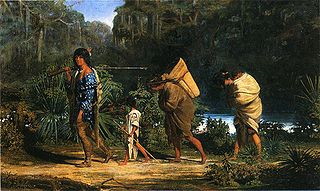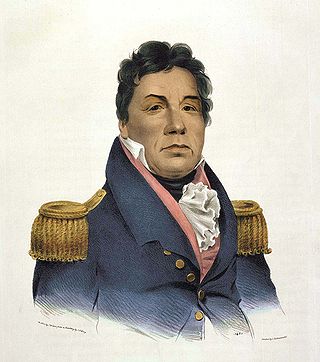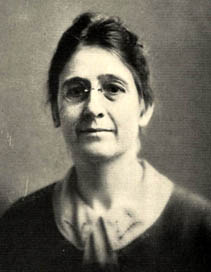
The Choctaw are a Native American people originally based in the Southeastern Woodlands, in what is now Alabama and Mississippi. Their Choctaw language is a Western Muskogean language. Today, Choctaw people are enrolled in three federally recognized tribes: the Choctaw Nation of Oklahoma, Mississippi Band of Choctaw Indians, and Jena Band of Choctaw Indians in Louisiana.

Pushmataha County is a county in the southeastern part of the U.S. state of Oklahoma. As of the 2020 census, the population was 10,812. Its county seat is Antlers.

Bryan County is a county in the U.S. state of Oklahoma. As of the 2020 census, the population was 46,067. Its county seat is Durant. It is the only county in the United States named for Democratic politician William Jennings Bryan.
Skullyville is an unincorporated rural community in Le Flore County, Oklahoma, United States. It is approximately one mile east of Spiro and 15 miles (24 km) southwest of Fort Smith, Arkansas. The community is within the Fort Smith, Arkansas-Oklahoma Metropolitan Statistical Area.

The Choctaw Nation is a Native American territory covering about 6,952,960 acres, occupying portions of southeastern Oklahoma in the United States. The Choctaw Nation is the third-largest federally recognized tribe in the United States and the second-largest Indian reservation in area after the Navajo. As of 2011, the tribe has 223,279 enrolled members, of whom 84,670 live within the state of Oklahoma and 41,616 live within the Choctaw Nation's jurisdiction. A total of 233,126 people live within these boundaries, with its tribal jurisdictional area comprising 10.5 counties in the state, with the seat of government being located in Durant, Oklahoma. It shares borders with the reservations of the Chickasaw, Muscogee, and Cherokee, as well as the U.S. states of Texas and Arkansas. By area, the Choctaw Nation is larger than eight U.S. states.

Tuskahoma is an unincorporated community and census-designated place in northern Pushmataha County, Oklahoma, United States, four miles east of Clayton. It was the former seat of the Choctaw Nation government prior to Oklahoma statehood. The population at the 2010 census was 151.

Allen Wright was Principal Chief of the Choctaw Republic from late 1866 to 1870. He had been ordained as a Presbyterian minister in 1852 after graduating from Union Theological Seminary in New York City. He was very active in the Choctaw government, holding several elected positions. He has been credited with the name Oklahoma for the land that would become the state.

Peter Perkins Pitchlynn was a Choctaw chief of mixed Native and European heritage. He was principal chief of the Choctaw Republic from 1864-1866 and surrendered to the Union on behalf of the nation at the end of the Civil War.
Honobia is an unincorporated community on the border between western LeFlore County and eastern Pushmataha County, Oklahoma, United States, 15 miles southeast of Talihina.
Lyceum is a former academic community in northern Pushmataha County, Oklahoma, United States, located two miles west of Tuskahoma.
Zoraya, pronounced “Zoray”, is a ghost town in western Pushmataha County, Oklahoma, United States, west of Miller.
The Pushmataha County Historical Society is a historical society devoted to collecting and preserving the history of Pushmataha County, Oklahoma, United States. It is headquartered in the historic Frisco Depot in Antlers, Oklahoma, which it operates as a public museum.

The Choctaw Capitol Building is a historic building built in 1884 that housed the government of the Choctaw Nation of Oklahoma from 1884 to 1907. The building is located in Pushmataha County, Oklahoma, two miles north of Tuskahoma. The site also includes the Choctaw Nation Council House and the Old Town Cemetery of Tuskahoma.

Pushmataha District was one of three provinces, or districts, comprising the former Choctaw Nation in the Indian Territory. Also called the Third District, it encompassed the southwestern one-third of the nation.
Blue County was a political subdivision of the Choctaw Nation of Indian Territory, prior to Oklahoma being admitted as a state. The county formed part of the Nation’s Pushmataha District, or Third District, one of three administrative super-regions.

Doaksville is a former settlement, now a ghost town, located in present-day Choctaw County, Oklahoma. It was founded between 1824 and 1831, by people of the Choctaw Indian tribe who were forced to leave their homes in the Southeastern United States and relocate in an area designated for their resettlement in Indian Territory. The community was named for Josiah Stuart Doak, co-owner of the local trading post. The town flourished until the U.S. Army abandoned nearby Fort Towson in 1854, though it remained as the Choctaw capital until 1859, then declined precipitately after being bypassed by a new railroad in 1870. It is now a ghost town and an archaeological preservation site.

Anna Lewis (1885–1961) was a noted teacher, historian and writer, who specialized in American history, and particularly the history of the Southwest. Born in what was then Indian Territory to a family of mixed Choctaw and European ancestry, she earned doctoral degrees from University of California, Berkeley (1915) and University of Oklahoma (1930). She was the first woman to receive a Ph. D. at the University of Oklahoma. Lewis spent her educational career at the Oklahoma College for Women. She wrote two books and numerous articles for publications in her area of interest before retiring in 1956 to a home she had built in southern Oklahoma. She died in 1961.
Cyrus Kingsbury was a Christian missionary active among the American Indians in the nineteenth century. He first worked with the Cherokee and founded Brainerd Mission near Chickamauga, Tennessee, later he served the Choctaw of Mississippi. He was known as "the Father of the Missions" in Indian Territory.











